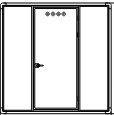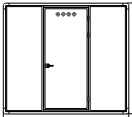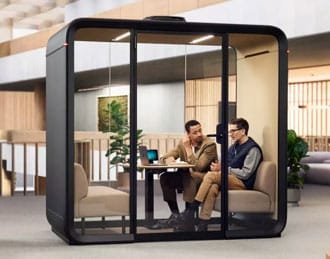
Blog

The Complete Silent Pod Studio Guide: Build Your Noise-Free Recording Space

Introduction: Why a Silent Pod Studio Is a Game Changer for Creators
Today, with all the technology available, your content needs to be perfect — especially the sound. If you’re a musician, podcaster, voice-over, or video content provider, extraneous sounds will ruin your recordings and disrupt your workflow. That’s where a Silent Pod Studio really stands out.
A Silent Pod Studio is a fully soundproof room that functions to suppress external noises and enhance the quality of your sound. It allows creators to record crisp sound without external interference from neighbors, family members, or traffic noise. For musicians, it means playing or recording at any hour without disturbing others. For podcasters and YouTubers, it offers professional-grade sound that maintains the listeners’ attention.
Besides sound isolation, Silent Pods also offer a distraction-free working space, which fosters productivity and creativity. Silent Pods are modular, transportable, and usually more affordable than typical soundproof rooms. Working from home, office, or recording studio, creators are guaranteed privacy, focus, and professional levels of production. In short, a Silent Pod is more than a sound booth — it’s an essential tool for creative professionals today who need professional results in a quiet environment.
Understanding the Silent Pod Concept: What Is It and How Does It Work?
- A Silent Pod is a portable, soundproof enclosure designed for noise-free recording, practice, and work.
- It creates an isolated, controlled space that blocks external noise and prevents internal sound from escaping.
- Built with high-density soundproof materials like:
- Mass Loaded Vinyl (MLV)
- Acoustic foam panels
- Double-glazed soundproof glass
- Insulated wall and ceiling panels
- Mass Loaded Vinyl (MLV)
- Features airtight seals and noise-isolating doors/windows to prevent sound leaks.
- Includes ventilation systems with noise traps, allowing airflow without compromising sound isolation.
- The pod’s structure absorbs, blocks, and reflects sound waves, significantly reducing external noise (up to 30dB or more).
- Interior often includes acoustic treatment to control echo, improve sound clarity, and enhance recording quality.
- Silent Pods are modular, easy to assemble, and portable, unlike permanent soundproof rooms.
- Suitable for musicians, podcasters, voice-over artists, YouTubers, and remote professionals.
- Works as a personal soundproof bubble, offering a quiet, distraction-free environment for professional-quality audio and focused work.
Who Needs a Silent Pod Studio? From Musicians to Content Creators
A Silent Pod Studio is an essential tool for anyone who relies on clean, high-quality sound. It’s not just for professional recording studios — it’s perfect for a wide range of creators and professionals who need a noise-free environment.
Musicians, especially drummers and instrumentalists, benefit from silent pods by practicing or recording anytime without disturbing neighbors or housemates. Music producers can mix and master tracks in an acoustically controlled space without external noise affecting their work.
Voice-over artists and audiobook narrators require a completely silent background for crisp, professional recordings. A silent pod eliminates echoes, background noise, and interruptions, ensuring flawless voice quality.
For YouTubers, streamers, and content creators, a pod helps deliver studio-quality sound in videos, podcasts, and live streams, boosting audience engagement. Podcasters also gain a major advantage, recording episodes without distractions or interference.
Even remote workers benefit, using silent pods for meetings, webinars, and focus work without household or environmental noise.
In short, anyone who values audio clarity, privacy, and focus — whether for music, content creation, or professional work — can greatly benefit from investing in a Silent Pod Studio.
How Soundproofing Works: The Science Behind Noise Isolation
Soundproofing is the process of blocking or reducing unwanted noise from entering or leaving a space. It relies on three key principles: sound isolation, acoustic absorption, and vibration control.
- Sound isolation focuses on blocking sound waves using dense, heavy materials like mass-loaded vinyl, double-glazed glass, and insulated panels. These materials prevent sound from passing through walls, floors, and ceilings.
- Acoustic absorption deals with controlling echoes and improving sound quality inside the space. Materials like acoustic foam, fabric panels, and bass traps absorb sound reflections, reducing reverberation without blocking external noise.
- Vibration control prevents sound from traveling through structures. Techniques like decoupling walls, using rubber mounts, or installing floating floors stop vibrations from transferring sound between surfaces.
Soundproof structures, like Silent Pods, are rated using the Sound Transmission Class (STC) scale. A higher STC number means better sound isolation. For example, an STC of 30-40 significantly reduces normal conversation noise, while 50+ blocks loud music or instruments.
In summary, soundproofing combines isolation, absorption, and vibration control to create a quiet, professional environment — essential for recording, practicing, and content creation.
Benefits of Building a Noise-Free Recording Space at Home or Office
Building a noise-free recording space at home or in the office offers tremendous advantages for creators and professionals. One of the most significant benefits is the ability to work without disturbance. Whether you are a musician practicing late at night or a podcaster recording during the day, external noises like traffic, household sounds, or conversations won’t interfere with your recordings. Likewise, you won’t disturb others around you, creating a peaceful environment for everyone.
Another major benefit is the improvement in sound quality. A properly soundproofed space eliminates background noise, echo, and reverberation, ensuring clean, professional-grade audio. This is essential for music production, voice-over work, podcasts, and content creation.
A quiet environment also enhances focus and productivity. Without constant noise distractions, creators can concentrate fully on their tasks, leading to better creativity and higher-quality output. Privacy is another key advantage. Whether you are working on sensitive projects, client meetings, or personal recordings, a silent pod ensures confidentiality and peace of mind.
Overall, a noise-free space not only improves your audio quality but also boosts comfort, concentration, and freedom to work anytime without limitations or interruptions.
Additionally, a noise-free space greatly boosts focus, allowing creators to immerse themselves fully in their work without interruptions. This leads to enhanced productivity, better creativity, and higher-quality results. Privacy is another crucial benefit. Whether you are hosting private client meetings, recording sensitive content, or simply want a personal space for creative work, a soundproof pod ensures total confidentiality.
Beyond technical advantages, it offers mental peace, comfort, and the flexibility to create, record, or work whenever inspiration strikes, free from limitations or distractions.

Key Features of a Professional Silent Pod Studio
A professional Silent Pod Studio is designed with advanced features that ensure maximum noise isolation, comfort, and functionality for creators. The structure is built using a sturdy steel or aluminum frame combined with high-density insulated panels that effectively block sound from entering or escaping. These panels are layered with soundproof materials such as mass-loaded vinyl, acoustic foam, and dense fiberboard to provide excellent sound isolation and acoustic control.
One of the standout features is the use of double-glazed soundproof glass on doors and windows. This not only maintains visibility and a modern aesthetic but also ensures minimal sound leakage while preserving natural light inside the pod. The acoustic panels inside are strategically placed to absorb echoes and control reflections, resulting in clean, professional-quality sound for recordings or practice.
Proper ventilation is another essential feature. Professional silent pods are equipped with silent ventilation systems that allow continuous airflow without compromising the soundproofing. This ensures a comfortable environment during long recording or working sessions.
Additionally, cable management is thoughtfully integrated into the design. Pods come with pre-installed ports, cable channels, and power outlets that keep audio gear, microphones, and instruments organized and accessible without allowing sound to pass through gaps. This combination of features creates an efficient, quiet, and highly functional creative workspace.
Room vs Pod: Why a Silent Pod Is Better Than Traditional Acoustic Treatment
- Traditional acoustic treatment focuses mainly on reducing echo and improving sound quality inside a room but doesn’t fully block external noise.
- Building a fully treated soundproof room requires costly, permanent modifications like adding dense insulation, floating floors, double walls, and special doors.
- Such rooms are often difficult to modify, relocate, or remove, limiting flexibility, especially for renters.
- A Silent Pod provides complete sound isolation and acoustic treatment in one compact, modular unit.
- Silent Pods use high-density panels, double-glazed glass, and airtight seals to effectively block outside noise.
- Pods are portable and easy to assemble, disassemble, or relocate, offering great flexibility for home or office use.
- They require no permanent structural changes, making them ideal for renters or temporary setups.
- Silent Pods deliver professional-grade recording conditions straight away, saving time and installation effort.
- Overall, Silent Pods combine sound isolation, acoustic control, and portability better than traditional treated rooms.
How to Choose the Right Size Silent Pod for Your Needs
Choosing the right size silent pod depends largely on your specific use and the space you have available. For solo vocalists or voice-over artists, a compact solo vocal booth is ideal. These small pods provide just enough room for a microphone, stand, and chair, making them perfect for tight spaces and focused recording sessions.
If you’re a drummer or instrumentalist needing to practice or record quietly, a larger drum booth is necessary. These pods are spacious enough to fit a full drum kit or other instruments while still offering excellent soundproofing to contain loud noises.
For podcasters or streamers who often record with multiple people or require some extra equipment, a podcast pod with moderate size and seating capacity works well. These provide room for conversation and gear without taking up excessive space.
Finally, if you need a fully equipped environment for music production or multi-instrument recording, a full recording pod offers the most space and flexibility. These pods can accommodate several people and all necessary equipment, offering both isolation and comfort.
Ultimately, your choice should balance your recording needs, available room, and budget to create the most effective noise-free space.
Essential Materials for a Silent Pod Studio
Creating an effective silent pod studio requires using specialized materials designed to block, absorb, and control sound. One of the most important materials is Mass Loaded Vinyl (MLV), a dense, flexible barrier that significantly reduces sound transmission through walls and floors. It acts as a heavy shield that blocks noise from passing in or out of the pod.
Inside the pod, acoustic foam panels are essential for absorbing sound reflections and reducing echo. These foam panels help to create a clear, balanced sound environment by preventing unwanted reverberation. To manage low-frequency sounds, bass traps are installed in corners where bass tends to accumulate, ensuring that the sound inside the pod remains tight and accurate.
Double-glazed glass panels are used in doors and windows to allow visibility while maintaining high levels of sound isolation. These glass panels prevent noise leakage much more effectively than single-pane glass.
Finally, sound seals are critical for closing gaps around doors, windows, and joints. These seals ensure that the pod is airtight, preventing sound from leaking through cracks and maintaining the pod’s overall soundproof integrity. Together, these materials form the backbone of a professional silent pod studio.
- Mass Loaded Vinyl (MLV): A dense, flexible barrier that significantly reduces sound transmission through walls and floors, acting as a heavy shield to block noise.
- Acoustic Foam Panels: Used inside the pod to absorb sound reflections and reduce echo, creating a clear and balanced sound environment.
- Bass Traps: Installed in corners to manage low-frequency sounds where bass tends to build up, ensuring tight and accurate audio inside the pod.
- Double-Glazed Glass Panels: Used in doors and windows to maintain visibility while providing superior sound isolation compared to single-pane glass.
- Sound Seals: Essential for closing gaps around doors, windows, and joints, making the pod airtight and preventing sound leakage.
Together, these materials form the foundation of a professional silent pod studio, ensuring effective noise isolation and optimal acoustic performance.

Step-by-Step Guide to Building or Installing a Silent Pod
- Create a detailed floor plan: Design the pod’s layout, dimensions, and placement of equipment and ventilation.
- Assemble the frame: Build a sturdy structure using steel or aluminum to support panels and doors.
- Add insulation layers: Install mass-loaded vinyl, acoustic foam, and soundproof panels to block and absorb sound.
- Fit the door: Install a soundproof door with airtight seals and, if possible, double-glazed glass to prevent noise leakage.
- Test the pod: Use decibel meters or clap tests to identify any sound leaks and ensure effective soundproofing.
- Make adjustments: Seal any gaps and reinforce insulation based on testing results to maximize noise isolation.
Following these steps ensures a well-built silent pod for optimal recording, practice, or focused work.
Ventilation Without Noise: Keeping Airflow Silent in Your Pod
Proper ventilation is crucial in a silent pod to ensure a comfortable and breathable environment, especially during long recording or practice sessions. However, introducing airflow can create unwanted noise that defeats the purpose of soundproofing. To tackle this, silent pods use specialized silent fans engineered to run quietly at low decibel levels, providing consistent fresh air circulation without adding distracting sounds.
The ventilation system typically includes ductwork designed with soundproofing in mind. These ducts often feature bends, insulation, and sound-absorbing linings to prevent noise from traveling through the air channels. This design minimizes the direct path of sound, reducing noise leakage from inside or outside the pod.
Additionally, noise traps or mufflers are strategically placed within the ventilation ducts. These devices work by absorbing and dissipating sound waves, effectively blocking airborne noise while still allowing adequate airflow.
Some advanced pods also use active noise cancellation technology within their ventilation systems to further reduce any fan noise. Combined, these elements ensure that airflow is maintained without sacrificing the pod’s quiet environment, allowing creators to work comfortably and without interruption for extended periods. This balance of ventilation and silence is essential for maintaining focus, recording clarity, and overall comfort inside the pod.
Lighting and Power Setup for Productivity Inside Your Pod
A well-designed lighting and power setup is essential for creating a comfortable and efficient workspace inside a silent pod. Most professional pods feature LED lighting, which provides bright, energy-efficient illumination without generating heat or noise. LED lights can often be adjusted in brightness and color temperature to suit different moods and tasks, helping reduce eye strain during long sessions.
Power accessibility is equally important. Pods are equipped with multiple power outlets to support various devices such as audio interfaces, computers, monitors, and studio equipment. Many also include USB ports for charging smartphones, tablets, and other accessories, ensuring that your devices remain powered without cluttering the space with extra adapters.
To enhance atmosphere and reduce fatigue, some pods incorporate ambient lighting options like soft backlights or color-changing LEDs. This creates a more inviting environment, which can boost creativity and focus.
Overall, combining efficient LED lighting with ample power and charging options makes the pod a fully functional, comfortable, and productive space for recording, streaming, or focused work.
Acoustic Treatment Inside the Pod: Optimizing Sound Quality
- Diffusers: Break up and scatter sound waves to reduce flutter echoes and standing waves, helping create a natural and spacious sound environment.
- Foam Placement: Place acoustic foam panels at key reflection points such as walls, ceiling, and behind speakers or microphones to absorb unwanted mid and high frequencies.
- Bass Management: Use bass traps in corners and along edges to absorb low-frequency sound waves, preventing buildup that causes muddiness and inaccurate sound.
- Desk Reflections: Address reflections from desks and other hard surfaces near microphones by using foam panels, rugs, or strategic placement of equipment to reduce sound coloration.
- Ceiling Clouds and Panels: Hanging acoustic panels (ceiling clouds) can absorb overhead reflections, further improving clarity in small pod spaces.
- Diffuser Placement: Position diffusers on rear walls or other reflective surfaces to maintain liveliness while preventing harsh echoes.
- Balanced Acoustic Design: Combine absorption and diffusion to avoid an overly “dead” or “boxy” sound, ensuring recordings and monitoring feel natural and detailed.
- Adjustable Treatment: Use movable panels or modular treatments to fine-tune acoustics based on specific recording or listening needs.
These combined strategies optimize sound clarity, reduce unwanted noise reflections, and create an acoustically balanced environment inside your silent pod for professional-quality results.
Cable Management and Gear Setup: Keeping Your Pod Organized
Effective cable management is essential for maintaining a clean, safe, and efficient workspace inside your silent pod. Proper routing of cables for microphones, audio interfaces, monitors, and instruments helps reduce clutter while preventing signal interference and accidental disconnections. Using dedicated cable channels or raceways along walls or under desks keeps wires neatly organized and out of sight. Clearly labeling each cable makes it easier to identify connections, which simplifies troubleshooting and rearranging equipment. Bundling cables together with reusable Velcro straps or cable ties helps avoid tangling and maintains order.
It’s important to separate power cables from audio cables to reduce electrical interference and unwanted noise. Desk grommets or wall pass-throughs allow cables to be routed cleanly through surfaces without causing damage or clutter. Strategically placing gear close to power sources and connection points minimizes cable lengths, reducing tripping hazards and keeping the workspace tidy. Flexible cable management solutions, such as adjustable mounts or clips, help secure cables along furniture or walls, keeping them off the floor and out of the way.
Implementing these cable management techniques creates a tidy and efficient pod environment that enhances workflow, protects equipment, and contributes to a professional and organized recording or practice space.
Design Aesthetics: How to Make Your Silent Pod Look Professional and Inspiring
Creating a silent pod that not only performs well but also looks professional and inspiring can significantly enhance your creative experience. Start with choosing a clean, modern design that fits the style of your home or studio. Neutral colors like black, gray, or white are popular for their sleek, timeless appeal and ability to blend seamlessly into any environment. Adding subtle accents such as wood finishes or colored trim can introduce warmth and personality without overwhelming the space.
Lighting plays a crucial role in aesthetics. Incorporate adjustable LED lighting that can shift between bright white for focused work and warmer tones for relaxation or creative brainstorming. This versatility helps create an inviting atmosphere that adapts to different moods and tasks. Keep the interior minimalistic and clutter-free by using smart storage solutions and built-in cable management to maintain a neat and organized look.
Comfortable seating and ergonomic furniture contribute not only to appearance but also to long-term usability. Finally, consider adding personal touches like artwork, plants, or acoustic panels with stylish fabric covers that enhance both the look and sound quality of the pod. A well-designed silent pod becomes more than a workspace — it turns into a motivating sanctuary where creativity can truly thrive.
Testing Your Silent Pod: How to Check Soundproofing Effectiveness
Testing the soundproofing effectiveness of your silent pod is a crucial step to ensure it meets your needs. One common method is using a decibel meter, which measures the noise levels inside and outside the pod. By comparing these readings, you can quantify how much sound the pod blocks. Aim for a significant reduction in decibel levels to confirm proper isolation.
Another simple technique is the clap test. Clap your hands loudly inside the pod and listen from outside to check if the sound escapes. Similarly, you can have someone clap or make noise outside the pod while you listen inside to detect any intrusion of external sound. These informal tests help identify weak points such as gaps, door seals, or ventilation areas.
Conducting external noise checks by playing consistent noises outside—like music or white noise—while monitoring the interior can further reveal how well the pod contains or blocks sound. Any noticeable leakage may require additional sealing or insulation.
By combining these testing methods, you can assess and fine-tune your silent pod’s soundproofing, ensuring a quiet, professional-quality
environment for recording or focused work.
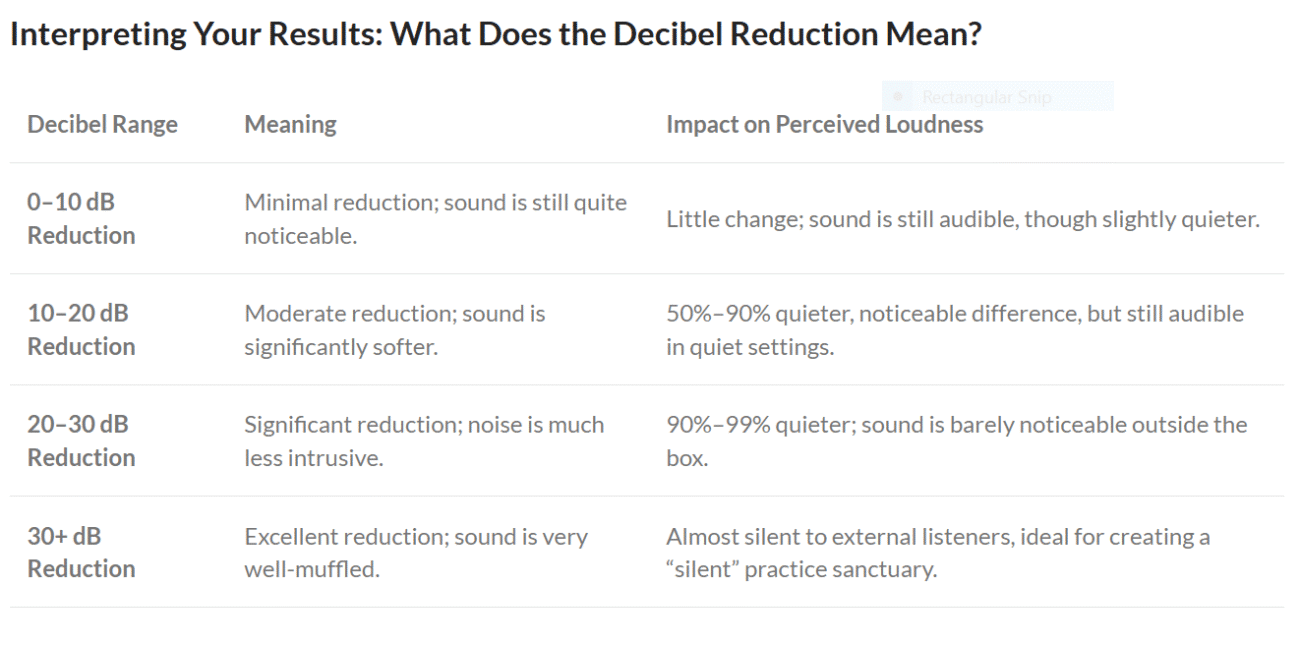
Common Mistakes to Avoid When Building a Soundproof Studio Pod
- Improper ventilation: Lack of a quiet, well-designed ventilation system can cause heat buildup and allow noise leaks if not properly soundproofed.
- Overlooking air gaps: Small gaps around doors, windows, and panel joints let sound pass through, reducing sound isolation. Airtight seals and quality weatherstripping are essential.
- Using incorrect materials: Relying only on acoustic foam without dense barriers like mass-loaded vinyl won’t effectively block noise. Proper layering of sound-absorbing and sound-blocking materials is necessary.
- Bad placement: Positioning the pod near noisy appliances, shared walls with neighbors, or unstable floors can compromise soundproofing performance.
- Ignoring structural support: Poorly supported flooring or walls can transmit vibrations, reducing isolation quality.
- Inadequate door seals: Doors that aren’t properly sealed or fitted can be major sound leaks.
- Skipping testing: Failing to test and adjust the pod after installation may leave unnoticed weak points in soundproofing.
Avoiding these mistakes helps ensure your soundproof pod performs at its best, providing a quiet and productive environment.
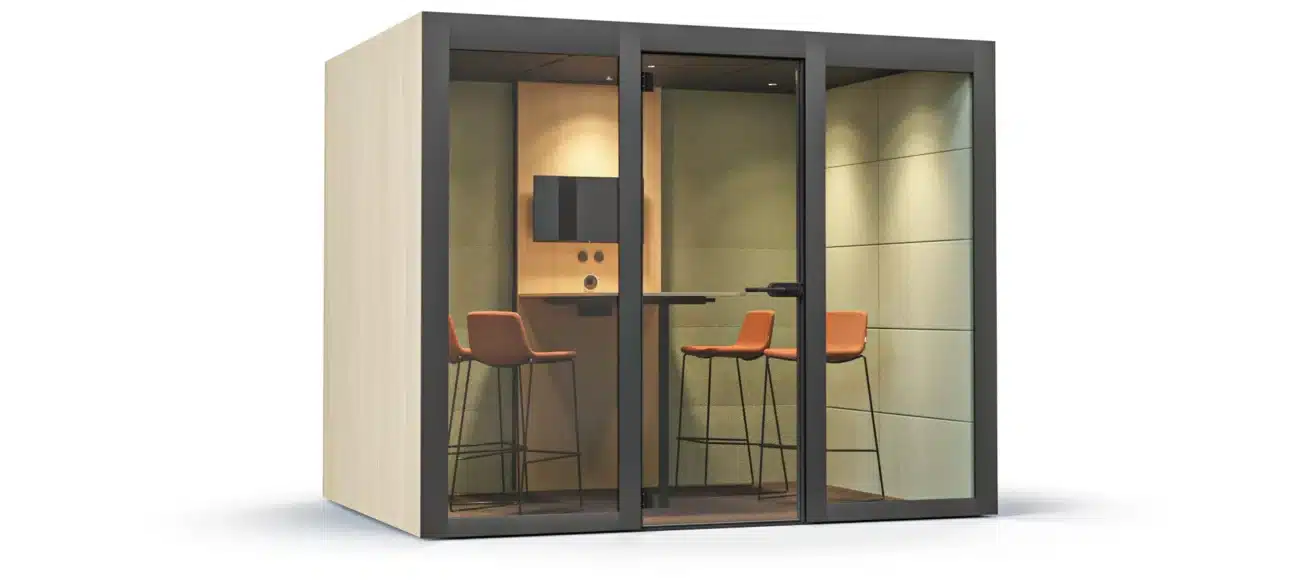
Improper ventilation: Lack of a quiet, well-designed ventilation system can cause heat buildup and allow noise leaks if not properly soundproofed.
Regular maintenance is key to ensuring your silent pod remains clean, comfortable, and soundproof over time. Start by cleaning the air vents frequently to prevent dust buildup, which can restrict airflow and reduce ventilation efficiency. Use a soft brush or vacuum to remove dust from fans and ductwork without damaging the components.
Maintaining the seals around doors and windows is also important. Inspect these regularly for signs of wear, cracks, or gaps. Replace or repair any damaged weatherstripping or soundproof seals to preserve airtightness and prevent sound leaks.
Check all panels and joints for any looseness or damage that could compromise the pod’s structural integrity and sound isolation. Tighten screws and reinforce connections as needed.
Additionally, keep the interior clean and free from clutter to maintain good acoustics and comfort. By following these simple maintenance steps, you ensure your silent pod continues to provide a quiet, efficient, and professional-quality space for recording or focused work.
Conclusion: Is a Silent Pod Studio Worth It? Final Thoughts and Recommendations
A silent pod studio offers significant benefits for anyone seeking a quiet, controlled environment for recording, practicing, or focused work. Its superior sound isolation, portability, and ease of setup make it an attractive solution compared to traditional soundproof rooms. With a silent pod, creators gain privacy, improved sound quality, and the freedom to work anytime without disturbing others or being interrupted by external noise.
However, whether a silent pod is the right fit depends on your specific needs, budget, and space. If you require a flexible, modular solution with professional soundproofing and quick installation, a silent pod is an excellent investment. For those with permanent spaces and larger budgets, custom-built soundproof rooms may offer more customization.
Alternative solutions like DIY acoustic treatment or portable vocal booths can help on a smaller scale but may lack the full noise isolation of a silent pod.
Ultimately, a silent pod studio provides a convenient, efficient, and effective way to create a professional-quality sound environment, making it well worth considering for musicians, podcasters, content creators, and professionals alike.
FAQs About Silent Pod Studios
What is a silent pod studio?
A silent pod studio is a compact, soundproof enclosure designed to create a quiet space for recording, practicing, or focused work by blocking external noise and controlling internal acoustics.
How effective are silent pods at soundproofing?
Silent pods use high-density materials, airtight seals, and double-glazed glass to reduce noise significantly, often blocking 30-50 decibels or more, depending on the model.
Can I use a silent pod at home?
Yes, silent pods are ideal for home use because they are modular, portable, and require no permanent construction, making them perfect for apartments or shared spaces.
Do silent pods require ventilation?
Yes, proper ventilation is crucial for comfort. Most silent pods come with silent ventilation systems that allow airflow without compromising sound isolation.
Are silent pods suitable for all types of recording?
Silent pods work well for vocals, instruments, podcasts, voice-overs, and more, but very large setups may require bigger pods or custom solutions.
How much does a silent pod cost?
Prices vary depending on size, materials, and features but generally range from a few thousand to several thousand dollars.
Can I assemble a silent pod myself?
Many silent pods are designed for easy assembly, but professional installation is recommended for optimal soundproofing and safety.
How do I maintain a silent pod?
Regularly clean air vents, check and maintain door seals, and inspect panels for wear to keep the pod functional and soundproof.
Recent Posts


DIY Soundproof Booth: A Complete Guide to Building and Installing Your Own

Ultimate Soundproof Drum Box Pro Guide: Build Your Silent Practice Space

Top Soundproof Office Pods: 2025 Buyer’s Guide & Comparison for Enhanced Productivity and Privacy



